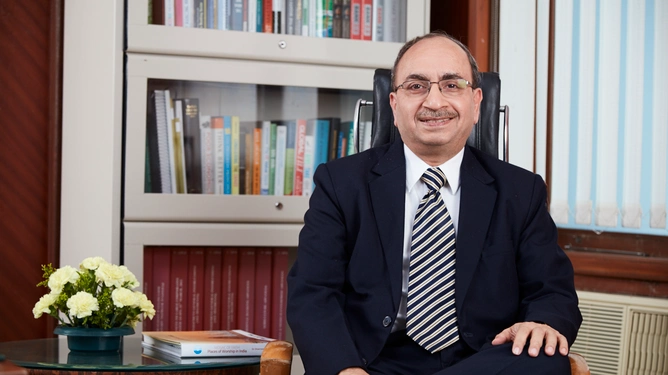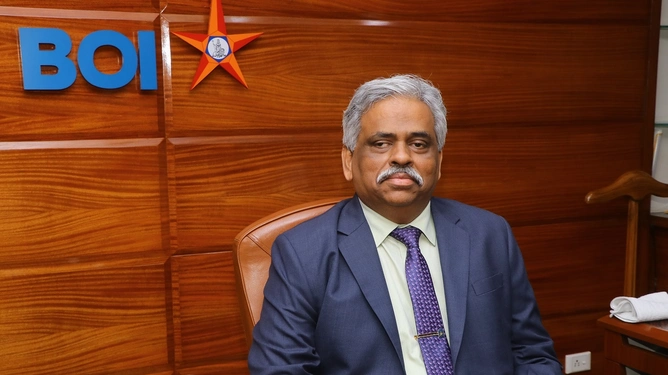The Reserve Bank of India announced the decisions of its Monetary Policy Committee meeting, on Friday, December 4. It kept the repo rate unchanged at 4%. The RBI governor, Shaktikanta Das, said the central bank's policy stance would remain 'accommodative.'
Here are some reactions from research analysts and some key figures from India Inc.
Dinesh Kumar Khara, Chairman, SBI

“The RBI policy of maintaining the status quo was expected but the continued forward guidance of an extended accommodative stance will continue to serve the markets well. The upward revision of the FY 21 GDP growth rate to -7.5 percent emphasizes that the worst is behind us though we must remain watchful.
The central bank announcement of the extension of on-tap TLTRO to stressed sectors is a perfect example of coordinated monetary and fiscal policy coordination, a hallmark of the current pandemic. Allowing the RRBs to access the liquidity adjustment facility, will help RRBs to efficiently deploy and diversify their surplus funds and enlarge the reverse repo window.
The move towards the strengthening of supervision of financial entities will right-size the three lines of defense in pursuit of an effective risk management framework. Measures such as digital payments supervision, deepening financial markets, and ensuring ease of doing business for export transactions are useful steps.”
A. K. Das, Managing Director & CEO, Bank of India

“The Policy while maintaining accommodative stance and keeping benchmark rates steady, aims towards financial stability. Acknowledging transient elevated inflation, the policy has adopted a balanced approach. Overall, a pragmatic policy to nurture growth and contain inflation post Covid-19.”
Surendra Hiranandani, Chairman and Managing Director, House of Hiranandani

“The RBI’s decision of keeping the repo rate unchanged was on expected lines owing to the rise in inflation in recent months. Even though the apex bank has kept rates unchanged, we still believe that there is room for financial institutions to cut down on their lending rates. Now the entire focus would be on how the government plans to combat the economic slowdown and boost demand. A series of measures in the form of capital injection, refinancing of banking institutions, policy impetus, subsidies, and offers are required to see a faster recovery.
The country's economy recovered faster than expected in the July-September quarter. The growth in the economy has also been reflected in the real estate activities of the last quarter where both residential as well as commercial markets have seen a sharp increase in activities. Reduction in stamp duty charges in some states and varied offers during the festive season coupled with a rate cut would have surely boosted the buyer sentiment further. Serious buyers have realized that this is the best time to buy.
The real estate industry in particular, stands to benefit due to several measures taken by the government so far. However, there is a lot that needs to be done for the sector to improve the pace of growth. We are looking forward to a bigger rate cut and sector-specific lending provisions to improve both the liquidity scenario and consumer spending ability.”
Dhiraj Relli, MD &CEO, HDFC Securities

“The outcome of the MPC meet on Dec 04 was largely on expected lines including the status quo on rates. The Committee's assurance to continue with the accommodative stance of monetary policy as long as necessary – for the current and next year - is welcome. The MPC feels that inflation is likely to remain elevated, with some relief in the winter months from prices of perishables and bumper kharif arrivals and has raised inflation projections for H2FY21 and H1FY22. The fact that as per the RBI, CPI may not fall materially even in H1FY22 is a bit worrying.
The Governor did not mention about asset quality issues or their trends. In the passing he mentioned that debt servicing capacities of corporates has risen in Q2FY21 meaning that the RBI does not perceive any deterioration in asset quality from the last policy review.
The real GDP growth projections have been upped. While the Q4 growth projection is below expectations, the H1FY22 projections bring in a sense of relief.
No measures have been announced to mop up the excess liquidity in the Banking system which has arisen because of high inflation and Forex sterilization. On the other hand, the RBI has assured provision of adequate liquidity to deserving segments. The real interest rate on the short end of the curve will remain severely in the negative for some time penalizing the savers. One hopes that this does not affect the savings rate materially.
All in all a welcome policy announcement with RBI maintaining the liquidity rope and hinting/hoping that asset quality stress seems under control. It seems that rates may remain on hold at least till Mid March 2021.”
Niranjan Hiranandani, president, Assocham and NAREDCO
“The monetary policy committee’s decision to keep key rates unchanged was on expected lines and may continue in the near future to support growth as private consumption has slowly started and several stalled projects have been revived due to the government’s efforts.
The repo rate is kept unchanged at 4 percent and reverse repo rate too stands unchanged at 3.35 percent. The Reserve Bank of India needs to have a hawkish stance while looking at the inflation figures and try to taper it further in order to mitigate the supply-side pressure.
The pro-active stance of the government to tackle the supply side issues would be instrumental in reducing the food prices further. As the numbers show that the economy is recuperating at a quicker pace than anticipated is a very good sign. There are several sectors which are showing an upturn consolidating the fact that the GDP growth numbers would be positive soon.
Home loans will continue to remain at attractive rates, this should augur well for home buying sentiment.
The projected real GDP growth for FY21 at -7.5 per cent vs -9.5 per cent projected earlier augurs well for the recovery story. Q3 growth is seen at 0.1 per cent; Q4 at 0.7 per cent bears out the RBI Governor’s statement on business sentiment of manufacturing firms ‘gradually improving’. RBI Governor’s proposal to expand on-tap TLTROs to cover other sectors is a positive move, the important thing he pointed out being that economic constraints have started to ease.”
Ramesh Nair, CEO & country head, JLL

Higher than expected recovery in Q2 FY 21 GDP reflects the resilience and robustness of the Indian economy. RBI’s decision to hold the policy rate and accommodative stance to revive growth on a sustainable basis augurs well for the economy. This is in spite of the fact that inflation for Apr to Oct 2020 is hovering above the higher limits of RBI’s inflation target.
The decision to maintain the policy rate was in line with the real estate sector’s expectations as the sector is just recovering and is yet to bounce back to pre-Covid-19 levels. Residential real estate witnessed initial signs of recovery with sales increasing by 34% in Q3 2020 over Q2 2020.
The RBI’s decision to hold the rate will help home buyers to avail the benefit of the prevailing lowest mortgage rates. Green shoots of recovery armed with other incentives such as stamp duty reduction in some states and the flexibility of developers in offering best prices/payment schemes will help in further improving home sales.
Kuntal Sur, Partner & Leader - Finance Risk & Regulation, PwC India
“The Monetary Policy Committee (MPC) at its meeting on Dec 4, 2020 has shown optimism in the recovery of the economy; as rural demand is expected to strengthen further, while urban demand is also gaining momentum. As a result, the MPC projected a positive growth for the second half of FY21. Given the higher inflation trajectory, projected at 6.8% in Q3 and 5.8% in Q4 - all the policy rates—repo, reverse-repo and bank rates have been kept unchanged.
To conserve capital and to tackle probable deterioration of asset qualities due to the Pandemic, the RBI advises banks to retain the profits and not make any dividend pay-out from the profits pertaining to financial year 2019-20.
For NBFCs, a transparent criteria as per a matrix of parameters for declaration of dividends will be published. MPC highlighted the availability of liquidity in the market through instruments like OMO purchases, operation twists and reverse repos as a result the spreads of corporate bonds over gilts narrowed to pre-pandemic levels across the term structure. With the introduction of Bilateral Netting of financials, RBI will issue new directives for developing a sound CDS market. This is expected to facilitate the development of the credit derivatives market and a liquid and vibrant market for corporate bonds, especially for lower rated issuers.”
D K Srivastava, chief policy advisor, EY India
“With inflation expectations remaining well above 6% for FY21, the monetary authorities are firmly placed in a status quo mode for the rest of the year. Signs of mild recovery in 3Q and stronger recovery in 4QFY21 will have to be largely sustained by fiscal policy. The MPC in its meeting on 4 December 2020 has retained the repo rate at 4.0% with an accommodative policy stance. International crude prices have started firming up with global demand gaining strength and oil producers beginning to implement supply cuts. The Union Government, in the forthcoming FY22 budget, may have to single-handedly support growth with an expansionary budget that focuses on aggressively pushing capital expenditure supported by recovery in tax revenues which should become visible 4QFY21 onwards”.
Siddhartha Sanyal, chief economist and head – research, Bandhan Bank
“The highlight of the RBI policy today is a clear reassurance of the ongoing accommodative stance for the foreseeable future, despite the central bank significantly revising up their CPI forecast trajectory. Thus, today’s policy underscore the priority of supporting growth over near term inflation concerns. While there is little room for policy rates to move in the current situation, this MPC meeting de facto reaffirmed continuation of the liquidity support from the central bank. The RBI has lowered their forecast of growth contraction in the current policy. Still, growth momentum is markedly weak and needs continued policy support.”
Dhruv Agarwala, group CEO, Housing.com, Makaan.com and Proptiger.com
The RBI move to maintain status quo on policy rates was expected in the face of persistently high retail inflation and an already record low REPO rate of 4%. Even as signs of recovery appear in Asia’s third-largest economy, the RBI has said that it would be open to cutting rates if the economy needs support, which is a very positive signal for the future.
The earlier measures announced by the RBI, including the rationalization of risk-weightage norms for home loans linking it to LTV and restructuring of loans to developers on a project basis, will continue to help the housing sector.
Interest rates on home loans are already at sub-7% level, with banks offering further sweeteners such as processing fee waivers among many others. We hope banks will continue to lend vigorously to the real estate sector, the second-largest employment generating sector in India.
Amar Ambani, senior president and head of research - institutional equities, YES SECURITIES
"In line with the expectations, RBI decided to stand pat on the policy rate and updated growth and inflation outlook given that inflation remains stubbornly high, while growth is gaining traction. The central bank scaled down on its earlier pessimistic GDP projection for FY21 as the frequency indicators and GDP data convey meaningful rebound in economic activity in both rural and urban demand.
Inflation will remain as a hindrance for next two quarters and will dissuade further policy rate cuts at least for FY21. MPC did not unleash new on the non-interest rate tools, as significant measures (OMOs, TLTROs) have already been announced during the last policy meeting. The fact that liquidity remains high, while growth is gaining traction, makes us believe that RBI will adopt a wait and watch approach for next few months. Nevertheless, the MPC reiterated its accommodative stance given the transitional phase the economy is going through, in terms of recovery from the pandemic."
Shishir Baijal, chairman & managing director, Knight Frank India
"Accommodative stance in the last few months has kick started the economy that had experienced a sudden contraction due to the pandemic. These measures have ensured both - demand stimulation and liquidity in the economy, achieved by keeping the short term borrowing rates well below benchmark.
Today’s announcement remains in line with the RBI’s goal of nurturing growth despite the rise in inflation. Keeping demand stimulated to maintain the current momentum would be critical for continuous acceleration of the economic recovery. Recently reviving market performance indicators, despite all odds and supported by government and central bank interventions, have enthused a great sense of relief across real estate markets in the country.
Home loan interest rates, which are at the lowest, have played a key role in rekindling the latent demand in housing market by nudging home buyers to make purchase decisions even during the pandemic. RBI’s decision to keep the rates unchanged will keep the momentum of demand intact to provide the much needed stability , as even while there is recovery in the economy, it is still fragile and highly volatile.”
Bekxy Kuriakose, head – fixed income, Principal Asset Management

"RBI kept key rates unchanged and stance as accommodative. MPC noted that inflation is expected to remain elevated and this prevented them from cutting key rates further. RBI Governor in his live appearance once again underscored the success of measures taken since the Pandemic broke out and reiterated that Bond market conditions have evolved in an orderly manner. He assured the market that the various measures being used for stabilizing yields like gilt purchases through OMOs, OT (Operation Twist) etc will continue. The key statement which seems relevant is when he repeated that "All instruments will be used at appropriate time while ensuring ample liquidity is available to the system". Thus we expect that soon some liquidity tightening measures may be introduced in form of term reverse repos of higher tenors or T bills or any other facility to impound liquidity. Currently the NET LAF is close to Rs 6 lakh crores and some of this liquidity may be withdrawn.
Post RBI statement, gilt yields have softened 3-7 bps as there was relief on reassurance of continuation of OMO measures.
We would be cautious of short term money market yields which pre policy had fallen to record lows even below the reverse repo rate. We expect that on introduction of liquidity tightening measures in coming days, yields mar rise in the upto 6 month segment by 10-25 bps.
Overall given the accommodative stance and RBI's continued focus for growth revival we would advise investors to keep a balanced asset allocation with core allocation to high quality short term debt category.”
Suman Chowdhury, chief analytical officer, Acuité Ratings & Research
“MPC’s decision to keep the interest rates on a pause mode is consistent with the market expectations given the aggressive trajectory of inflation which has continued to rise over the last few months and stood at 7.6% in Oct 2020. While the central bank has indicated its commitment to support growth and will continue to maintain an accommodative stance, we believe that the rate cut cycle is over for all practical purposes. Given RBI’s projection of CPI at 6.8% in Q3FY21 and 5.8% in Q4FY21, the expectation of any further rate cut is minimal over the next 2-3 quarters and further, in our opinion, the risks of a reversal in rates have started to increase in a scenario of a stronger growth pickup than the current expectations. RBI’s outlook on growth has also clearly been revised given the latest encouraging high frequency data points and there is an expectation of a marginal growth in real GDP in both Q3 and Q4, with the whole year GDP projection revised downwards to (-7.5%). While RBI has managed the bond yields well in the face of challenges on the inflationary, fiscal and the currency front so far, the task is going to be increasingly challenging over the next few months in our opinion.
One of the steps to encourage lending from the banking sector has been to permit the banks to use the TLTRO route to fund the additional exposures to the stressed corporate and the SME borrowers under the ECGLS scheme. RBI has also made some important announcements to strengthen the framework for financial stability. NBFCs and UCBs are expected to witness a tighter supervisory environment with guidelines on risk based internal audit to be put in place. Further, restrictions on dividend payouts for NBFCs and banks also reflect RBI’s intent to conserve capital in the financial sector. The other relevant aspect is the focus on strengthening the IT security mechanisms in the banking system given the exponential rise in digital platforms including internet and mobile banking.”










Leave a Comment
Your email address will not be published. Required field are marked*